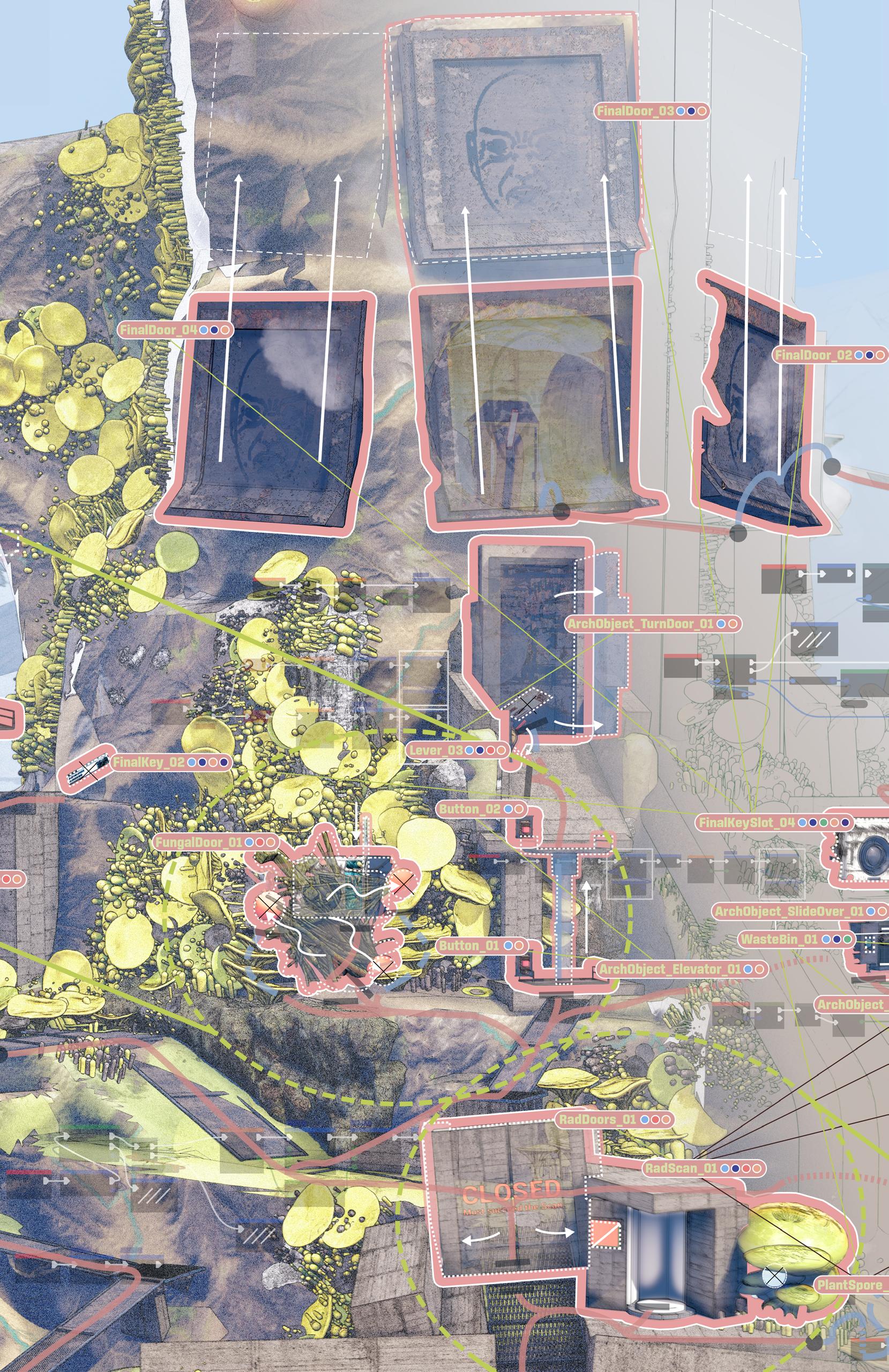RENEWAL
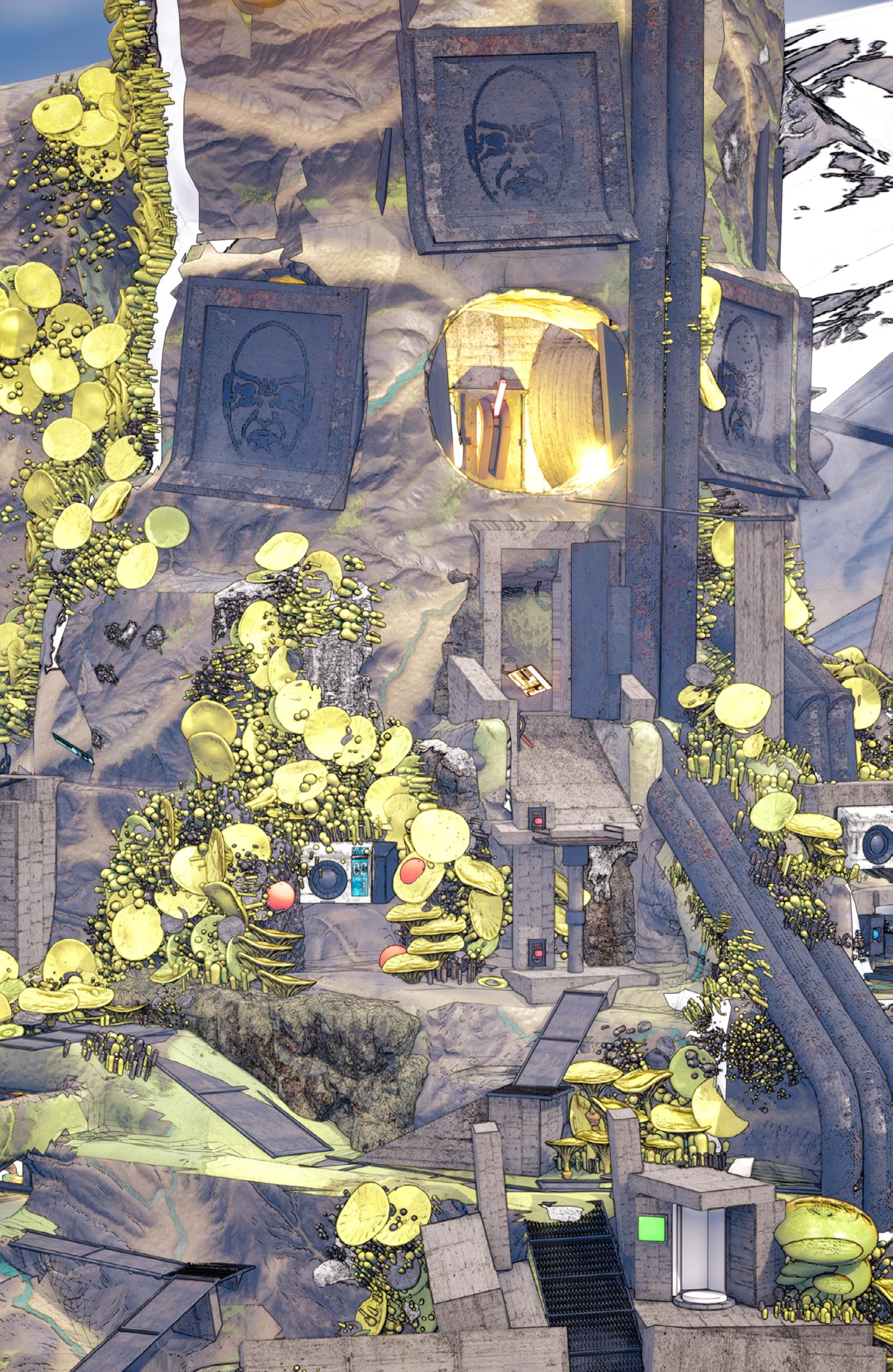
TREY MARSHALL






This thesis is an interactive experience about uncovering the original intent of a nuclear waste repository in a post-ice age landscape, beyond the limits of our current climate context. Inside blended ecologies, we are forced to reinterpret things once familiar to us, attach new meaning to past markers and tombs, explore plantlife revealed from their underground ecosystems, and manipulate the creations of a long lost past. Through storytelling and traversal, this experience seeks to evoke urgency for designing in different time-scales so that we might reinterpret approaches to ecological issues from short to long-term.
Using nuclear energy and waste systems as a vessel, this thesis pushes into the long timescales present in the Sandia reports of 1993 and a 2010 documentary titled “Into Eternity”, where a singular question persists: How do we make sure nuclear waste repositories are perceived as dangerous for 10,000 to 1,000,000 years in the future? Landscapes of concrete thorns, world maps of nuclear waste repositories, forbidding blocks, and message kiosks all part of a cohesive levelbased system to relay messages across millennia to creatures who might not have the capacity to understand our technology or even read.

Scientists predict that over the next 100,000 years (not too far into the range) it is possible that the next ice age will begin, which alone will radically alter the earth’s landscapes and render all types of warning messages unclear even to us today. Time-based media affords exploration inside of these long timescales, letting ideas of alternative futures simmer and bubble, ecological ghosts intertwining and loosening, slowly defining and re-interpreting spaces once
familiar into sites of new rituals. While I do not think that we should be attempting to masterplan the future, I do believe that we have a duty as those with an architectural mind to imagine how new systems might interact with each other in a future not far from our own. By designing timebased speculative realities, we allow ourselves to imagine what our own world could look like, and to understand our current environment through a different perspective.

Emerging from the glaciers of a future ice age, tunnels of a forgotten facility become exposed from deep within the earth. The necessary evils of nuclear energy buried and lost to time have now resurfaced, against the wishes of the civilization who entombed it. Previously, these tunnels worked as a systemic disposal of nuclear waste (storing them in copper casks, digging cylindrical holes in bedrock, and packing them tight with clay). Alongside the waste, the life inside the tunnels themselves have been opened to the outside air. Radiotrophic fungi (which grows towards and feeds on radioactive materials) has grown in, around, and through
these tunnels, creating a thick network of fungal intelligence within the facility walls and extending beyond. Within this world, we view the facility as a blissfully unaware outsider, an explorer, a chronicler. Inside blended ecologies, we are forced to reinterpret things once familiar to us, attach new meaning to past markers and tombs, explore plantlife revealed from their underground ecosystems, and manipulate the creations of a long lost past. Through visual storytelling and interactive traversal, this experience seeks to evoke an urgency for designing in different time-scales so that we might reinterpret approaches to current ecological issues from short to long-term.

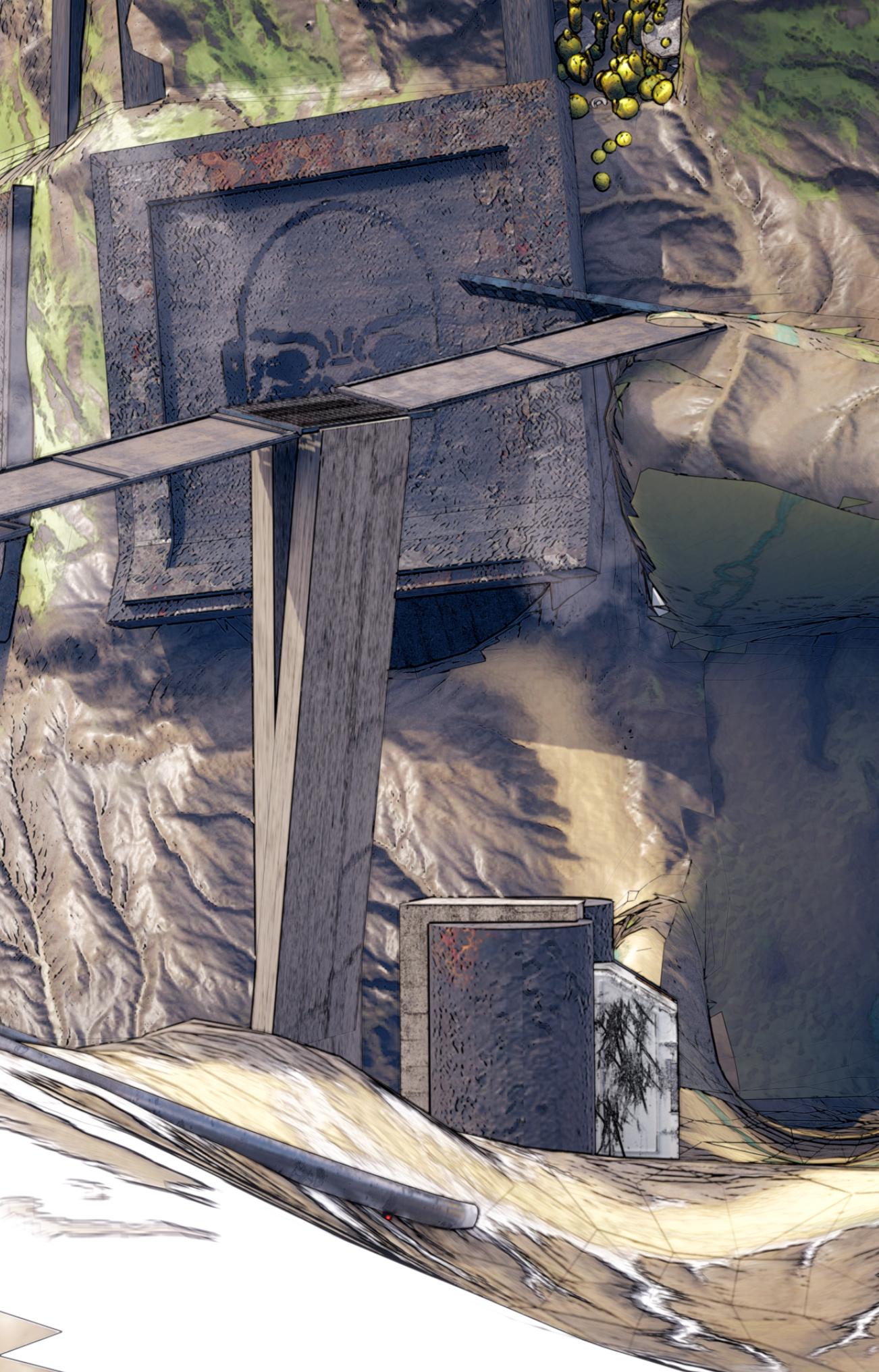
DAC Machine revealed to the sky for the first time since the ice age began

The world of RENEWAL has been created using Unreal Engine 5 blueprints, assets from Quixel Bridge + Sci-fi Valley Village pack, Cel shaders inspired by Planet Garden + Prismaticadev, Interaction systems from Vinipi + Space Raccoon Game Studio.
The previous drawing was a representation of the deep interconnectivity and complexity of this world, each object linked to another through blueprint interactions. Through visual storytelling and interactive traversal, the player rediscovers the intent fo this facility. The objects that the player can interact with are outlined, showing the object reaction, movement or color change in white lines.
All of the blueprint recreations

are accurate to their existing counterparts within the game, including colors and organization. The object tags describe the back-of-house infromation such as variable typesandnamingconventions.
Throughout the drawing, pink and blue linework represents main circulation paths available to the player, which distinguish between running and jumping respectively.
The right side of the overall image begins to fade away into the “Fungal View” which is accessible to the player after obtaining plant spores. The player can extend their consiouscness and change their perspective of the world as if they were part of this fungal network, outlining the facility through its seams.







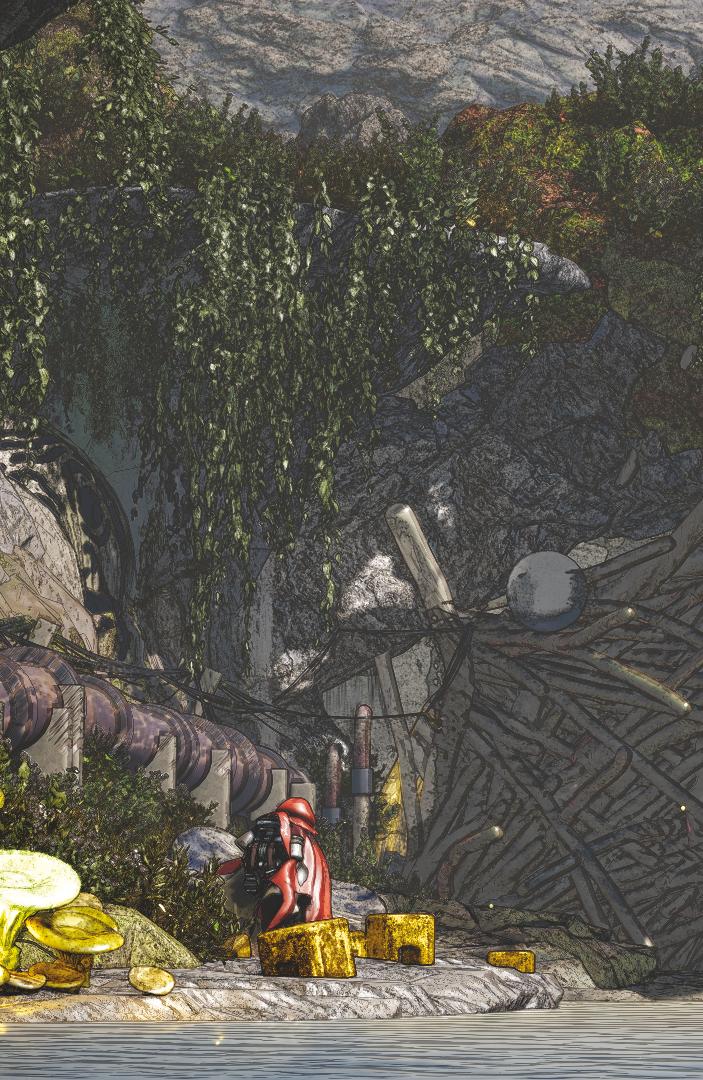
As the Chernobyl Nuclear Power plant malfunctioned, it caused one of the worst nuclear accidents in the world. 1,838 square miles of land was polluted with heavy radiation and abandoned, and tens of thousands of deaths occurring as a result of the radiation over time. As a result of the abandonment of humans, wildlife and plantlife has reclaimed this area for themselves, despite the radiation and toxicity in the earth and air. Many show physical traits such as the Red Forest of Pine trees or frogs with high melanin levels.
In the cases of Chernobyl and later Fukushima, a large-scale structure built over top of the site in order to confine the radioactive material. There have been many studies shown that the plantlife has absorbed some of the radiation from within the structures, and that fungi can be utilized to cleanse the radioactive landscape. Over 800 Nuclear Power Plants exist all around the world, and while they will likely not have a nuclear disaster, they do produce an extreme amount of nuclear waste, which fungi and other life could feed on and adapt to.


WILDLIFE RECLAIMING THE HUMAN EXCLUSION ZONE


ONKALO FACILITY + SYSTEMS
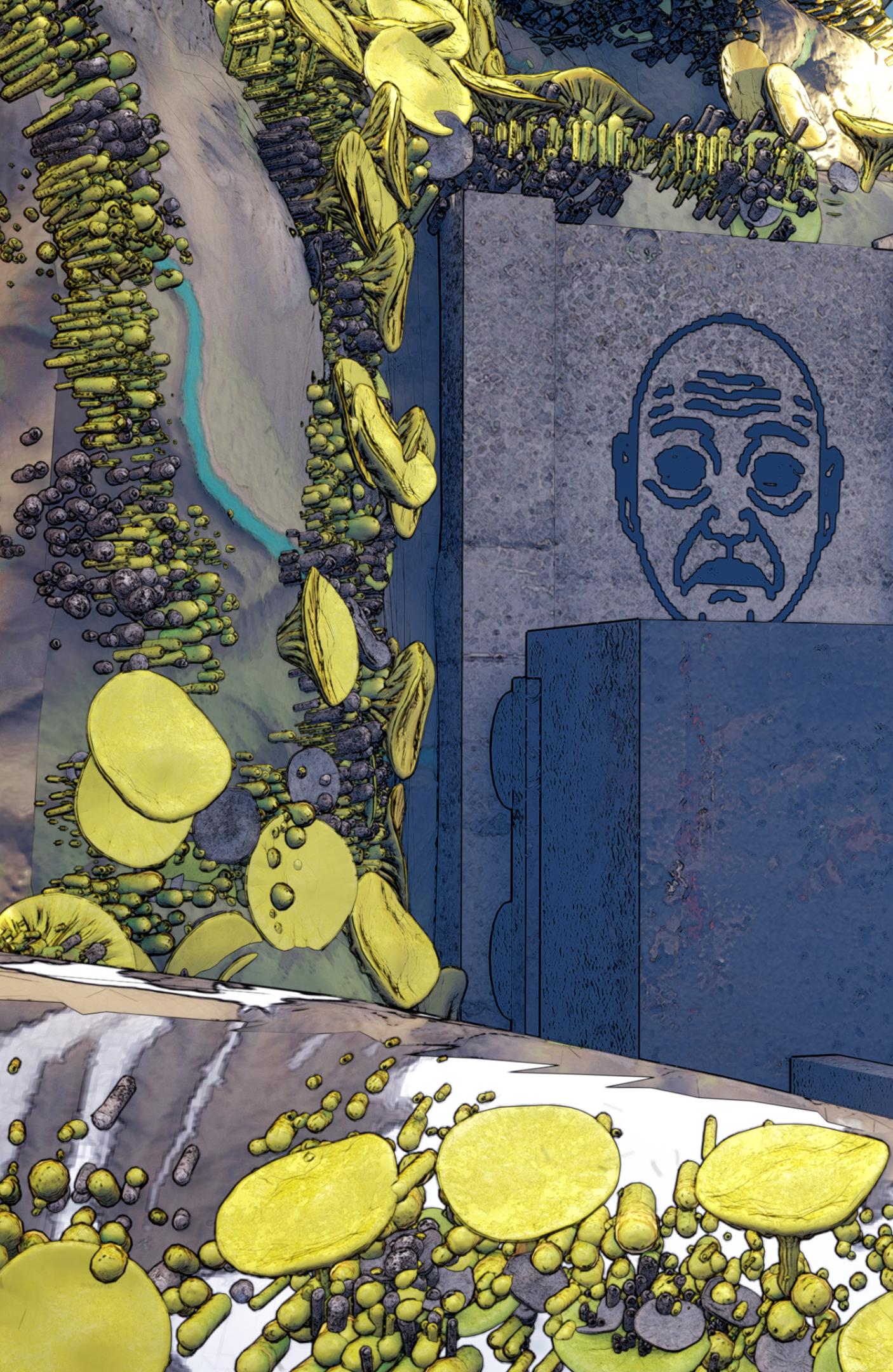
EARTHWORK DESIGNS FROM 1993 SANDIA REPORT ON NUCLEAR WASTE

The Onkalo Nuclear Waste Repository in Finland provides an interesting site because of their teams continued research and speculation on how future creatures could interpret their facility. The waste itself is highly dangerous so their team feel the need to make sure that it is interpreted as such. Some methods they’ve discussed are new rosetta stones, sharp jagged landscapes surrounding the facility, simple signage/ markers, and simply not doing anything at all to hide it. The team at Onkalo is thinking on large time-scales up to
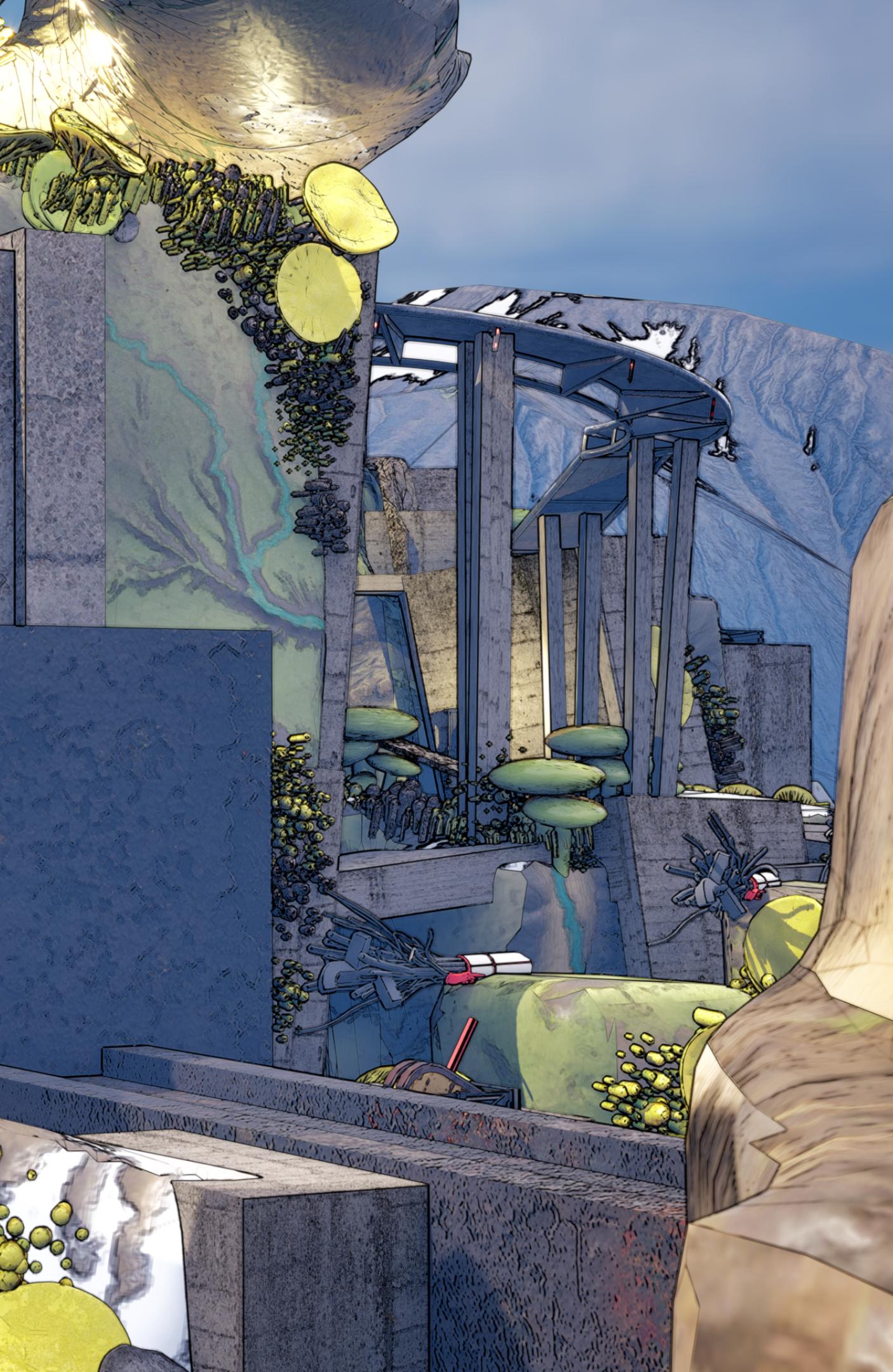
100,000 to 1 million years. It is speculated by scientists that the next Ice Age will also occur during that time frame, where the world will look drastically different, along with any living creatures that survive.
By exploring these histories through an new perspective, this project speculates on what would happen to nuclear containment facilities after the climate crisis resolves itself, when life on Earth will have a much different relationship with these structures and ecologies.

MESSAGE KIOSK + SPIKE FIELD
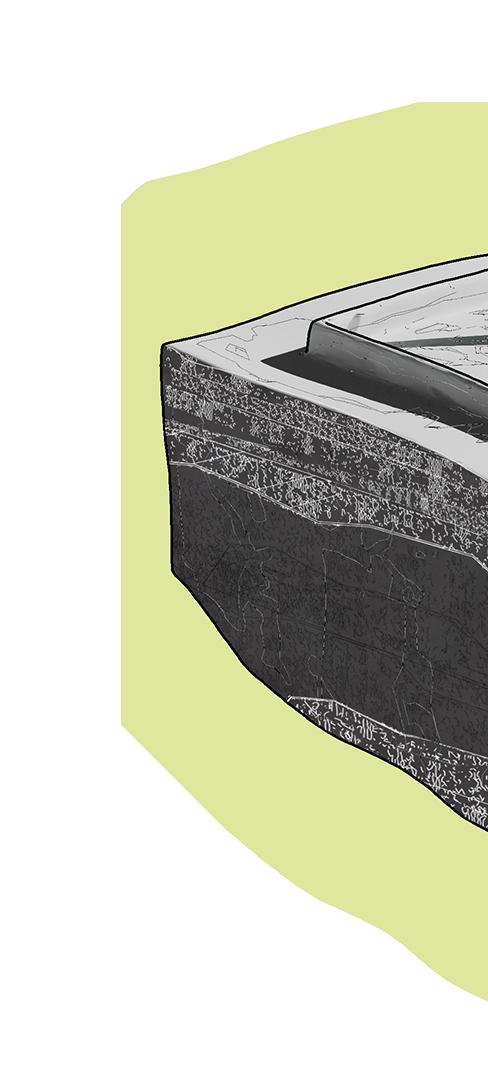
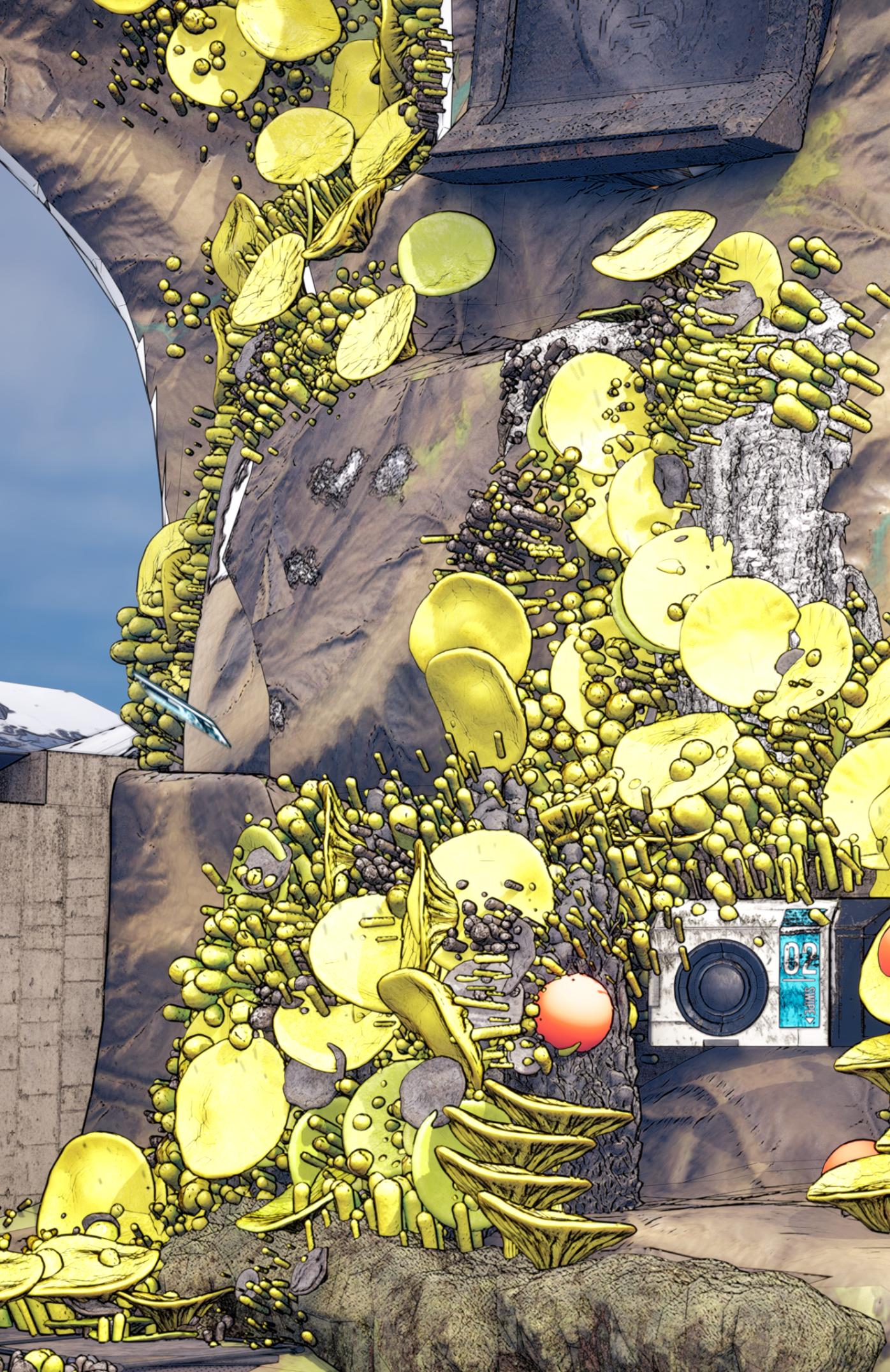

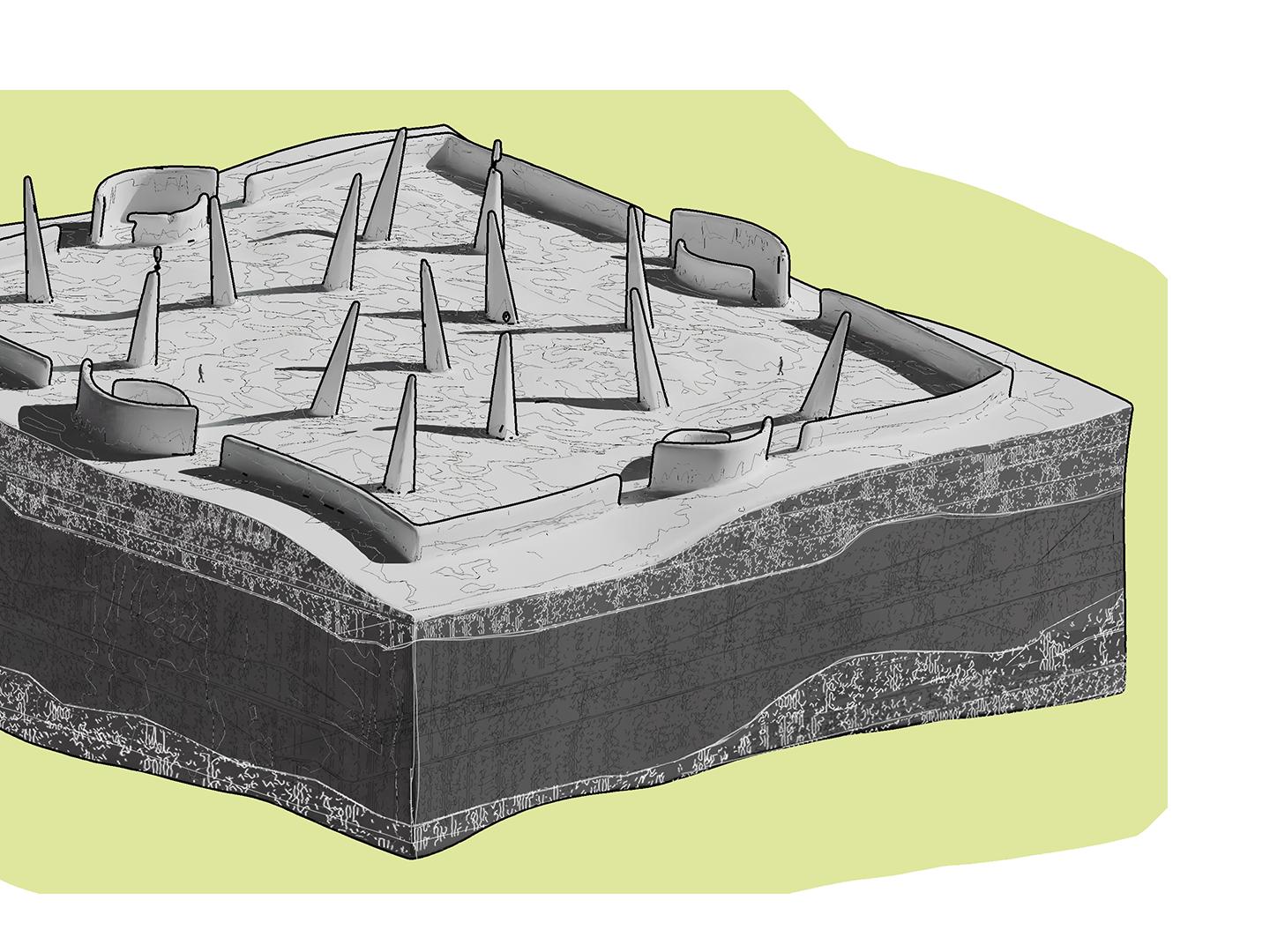

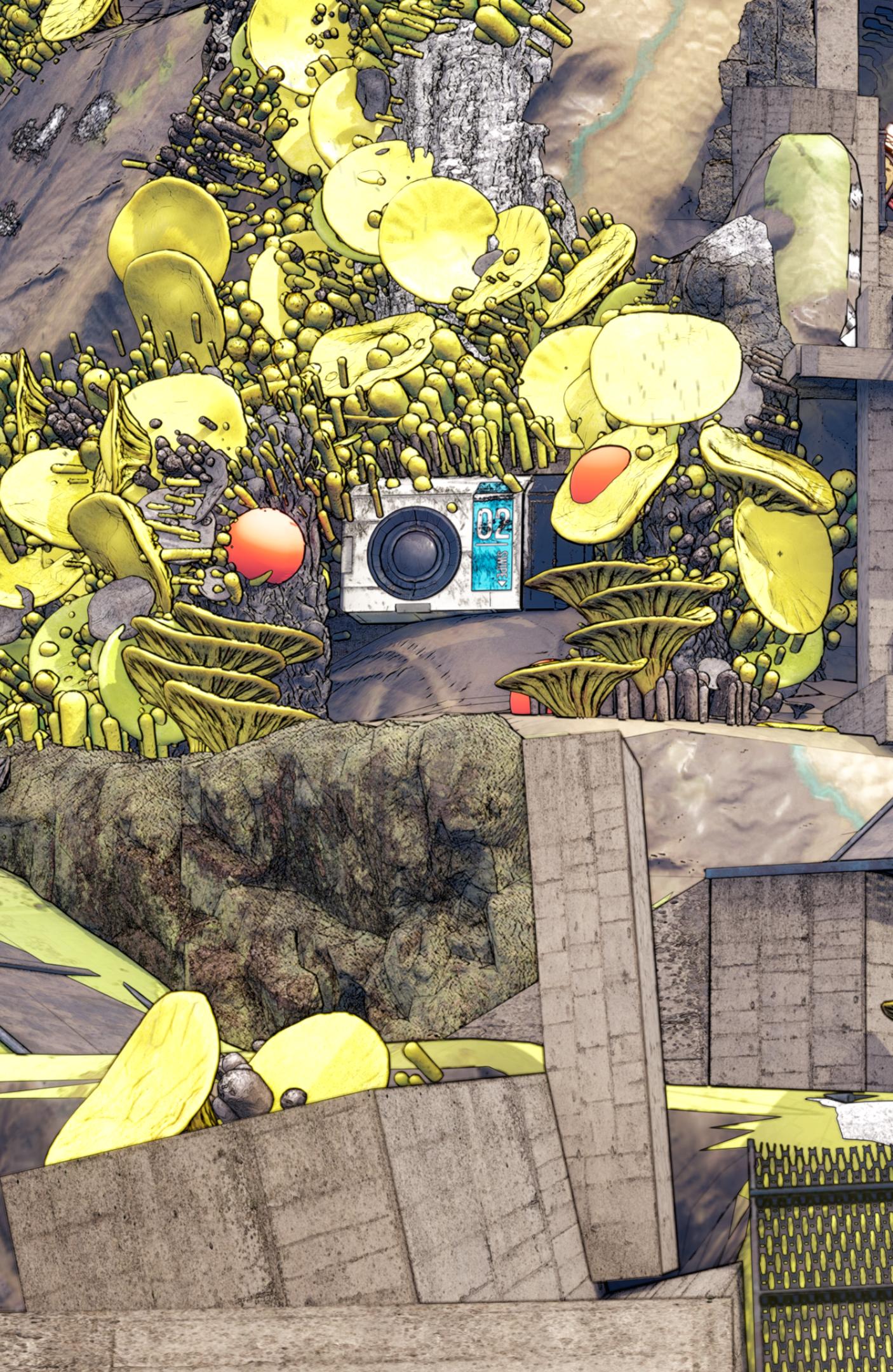




As a work of fiction, this project takes inspiration from many other works of fiction, including films and other independent games made by small teams, but also manga, anime, game theory, artists and architects. I am most inspired by the works of Sandra Youkhana and Luke Caspar Pearson, who combine to make You+Pea. In Videogame Atlas, they analyze several popular games through an architectural lens, drawing the systems inherant in these games. The architectural perspective of these drawings mix well with the broader audience of the book, allowing readers to understand the message but also see the beauty of hidden systems.
Our ability as designers and architectural thinkers mean very little if we are unable to represent our ideas to people outside of academia and practice. This is what draws me towards films and manga, where stories can unfold through visuals packaged as a singular unit. For example, BLAME! uses the environment as the main character, telling the story of that place while using other characters as the device in which we experience the world. We understand the visual tropes that describe the environments present in fiction and can build upon those to create unique stories. As Liam Young says, “By visualizing imaginary worlds, we understand our own world in new ways.”

by Adam Robinson-Yu (2019)
A Short Hike is a short game about hiking (duh), made by a small team and released in 2019. Upon release, the game generated buzz from its cozy and quick approach to open world systems, including dialogue, side quests, secret locations and more, all within the timeframe of roughly one hour.
This game presents a unique approach to the open world genre, while still appealing to some typical rules for guiding the player through the map. I wrote an article that attempts to explore these game systems from an architectural point of view, specifically looking at:
World and Level Design Character Movement Tool Progression
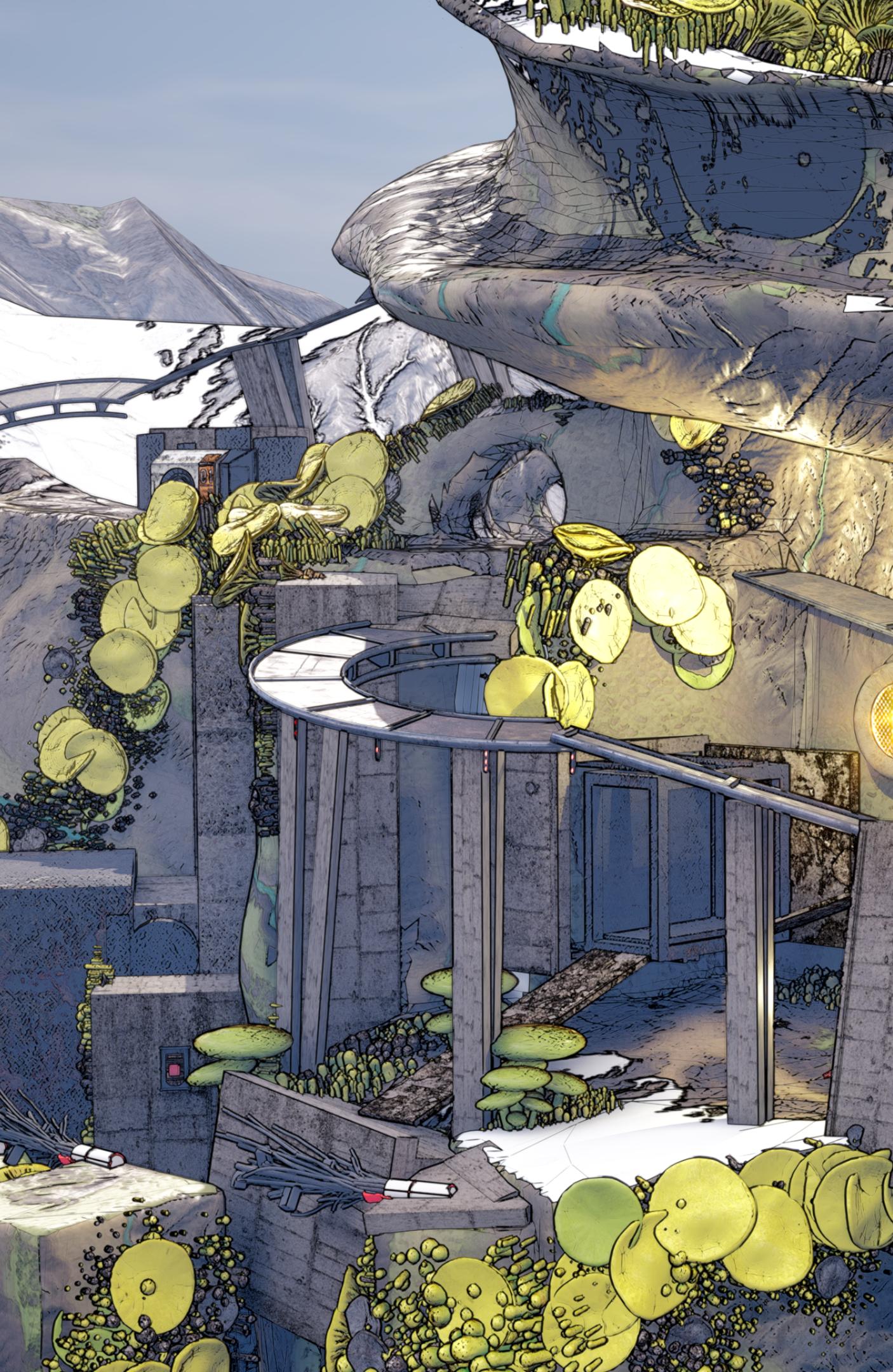
These three systems fuse together to give the player a relaxing, exploratory experience, getting lost in the process and loving each second. While the game was commercially successful, the relevance for this thesis proejct is its ability to use simplistic mechanics (movement changing over time by acquiring items), and how they greater effect of that system is that our perception of the built environment around us changes drastically based on where we can and cannot go to.



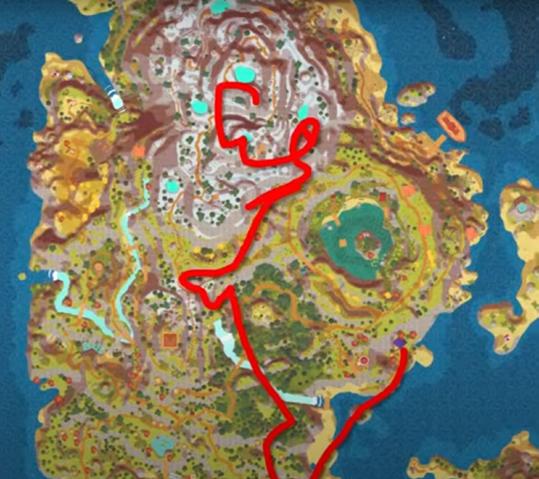



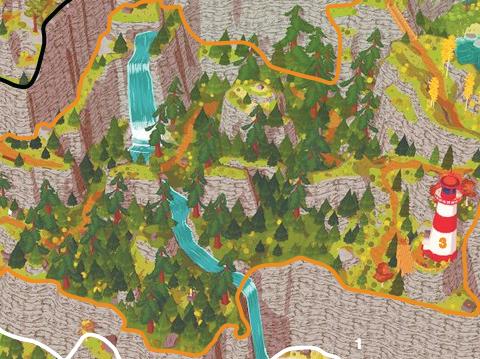









Journey is an emotional visual story taking the player through several different types of landscapes, each detailing a portion of the overall story of the game. Ruins of a forgotton past are unvealed by passive adventuring and exploring, guided by the large glowing mountain in the distance.
Journey proposes an atypical amorphic main character, with a similar greater-being encountered at the end of each level. The levels in Journey are focused around a particular idea or theme, depending on the emotional graph above. The color of these areas are instantly recognizeable which add
by thatgamecompany (2020) Journey

to the communal experience of the game.
In relevance to this thesis project, Journey gives several examples of easy-tochew gameplay mechanics, level and environment design, and storytelling.
A majority of the story is told through short cutscenes depicting a mural expanding over time, without words. This allows the game to be experience more ambiguously as an art piece. The environments and levels each have a unique element to them which the player needs to discover and accomplish, in addition to the sounds and visuals.
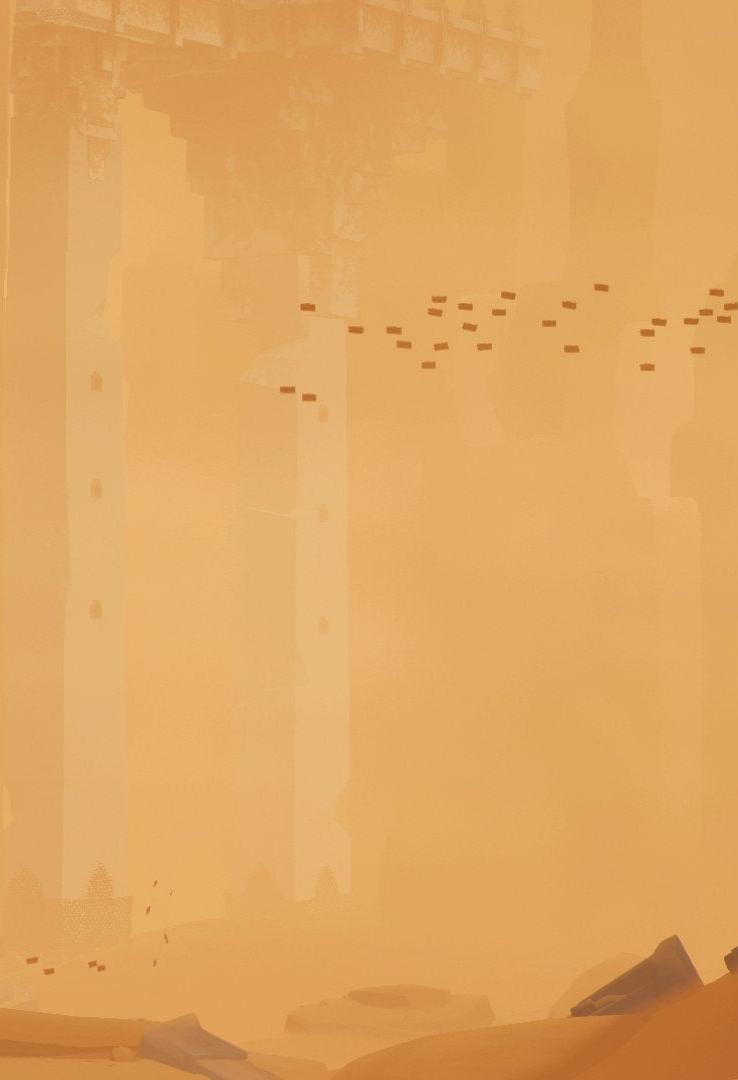
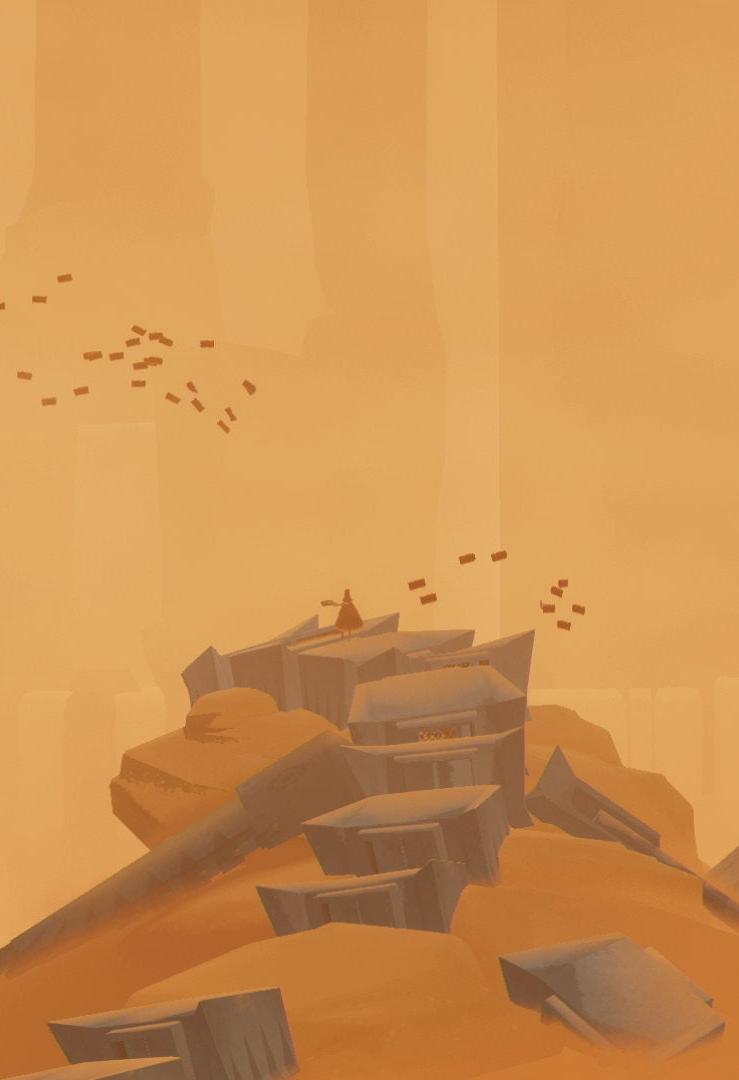
Written and illustrated by Tsutomu Nihei (2003)
BLAME! is a graphic novel based in The City, which is an ever-expanding megastructure which has taken over the solar system. While the story exists and has depth, the beauty lies in the remarkable world and the visuals representing it.
Mechanics and form entertwine into one sublime construction, continuing into the abyss as people nevigate this seam between the mechanical and the pleasurable, both largely devoid of life. This seam contains many dangers, including

humanoid cyborgs, alien life forms, lost children, and impossiby strong weapons.
The verticality and horizontality both add to the variability of the spaces described in the story, adding many layers of structural depth to the world we are inhabiting through the pages. A silent loner progresses through them, approaching the encounters head-on.
Within the seam, there is a faction tasked with keeping intruders away and out of the seams, thereby making it even more dangerous a place that it already was.



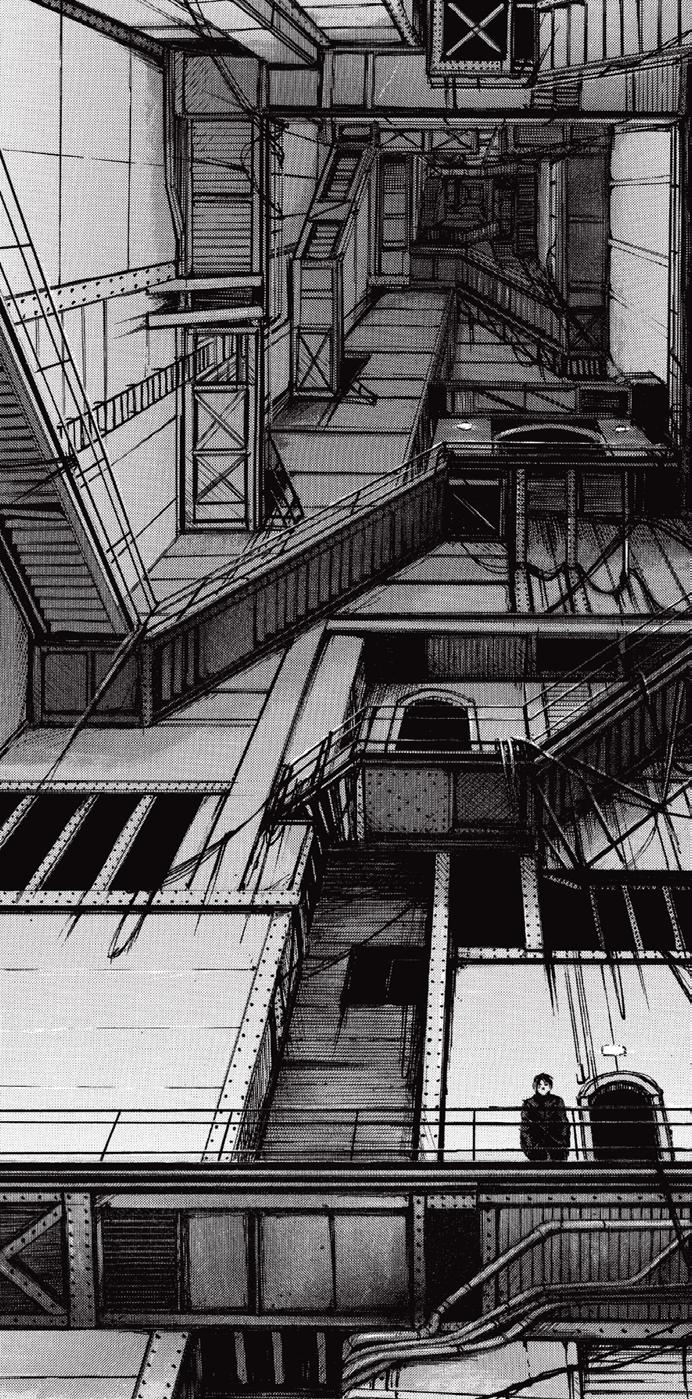


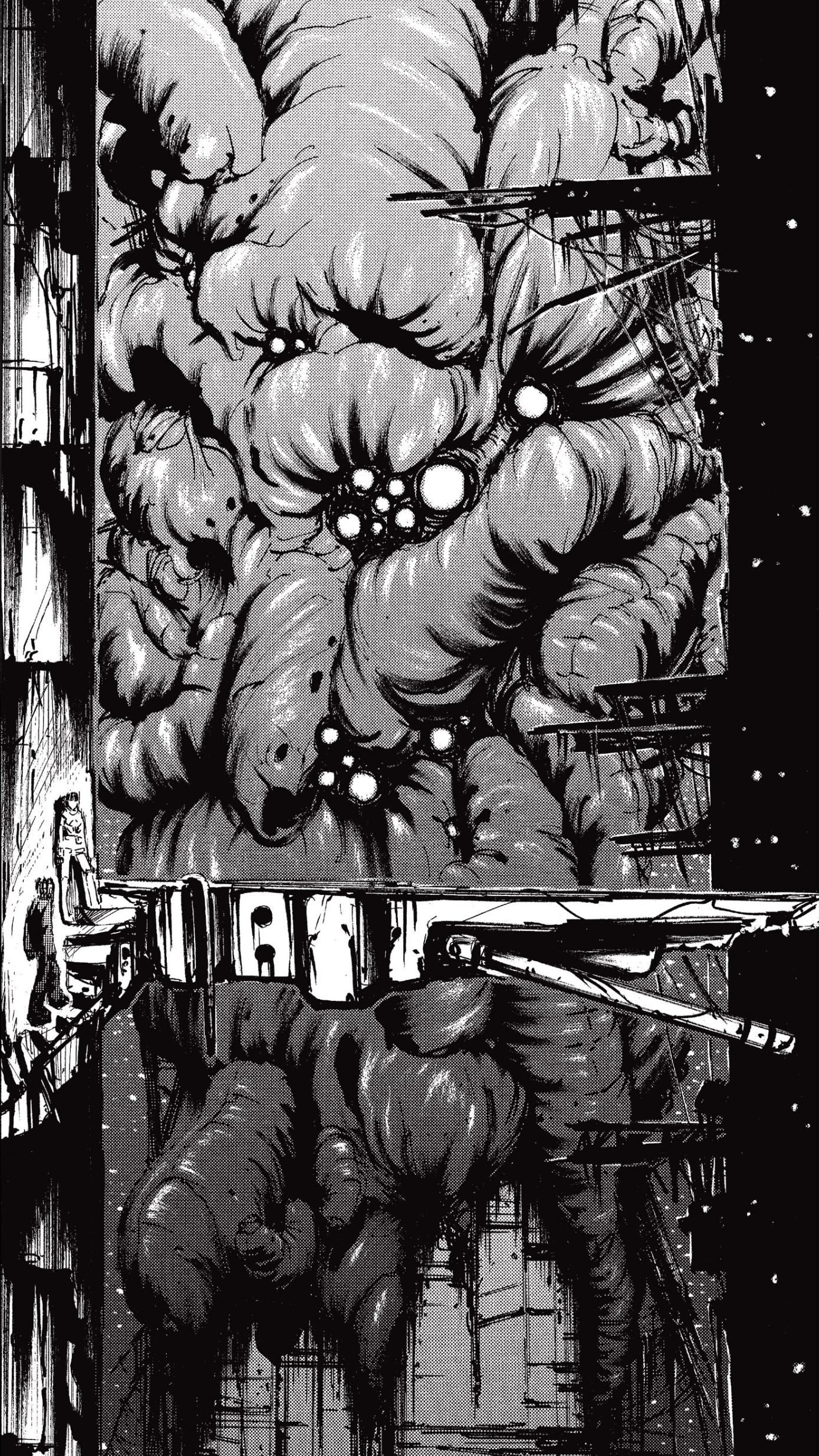

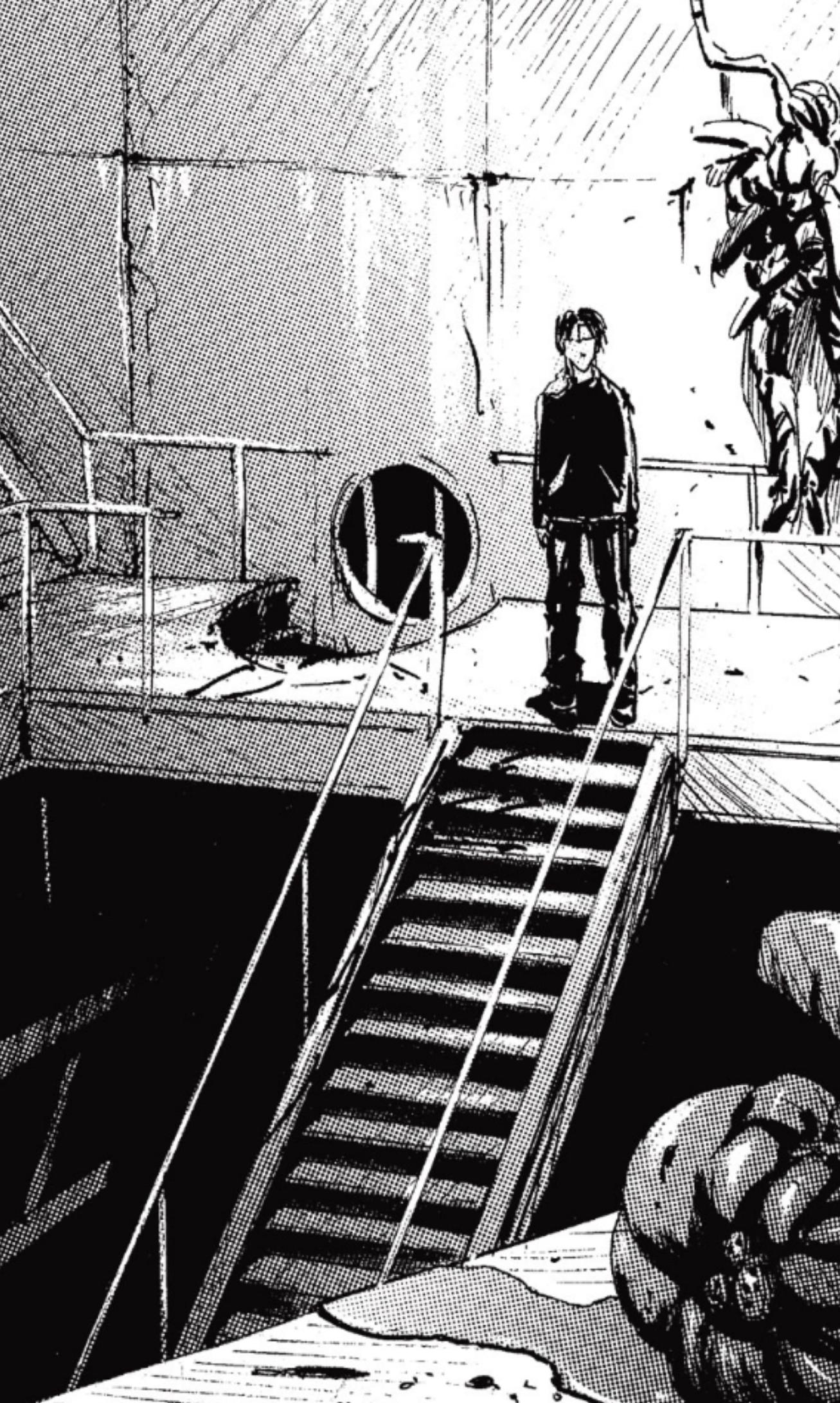

Novel by Jeff Vandermeer (2014), Film (2018)
Annihilation is a weird cosmic horror story set in a parallel Earth, where a large area of mysterious plant and animal creatures exist, surrounded by a barrier called The Shimmer. This area is frequently researched by various teams, none of them returned from their missions except for one person.
The story follows a group of scientists as they investigate this horrifying landscape, with mutated plants, and animals
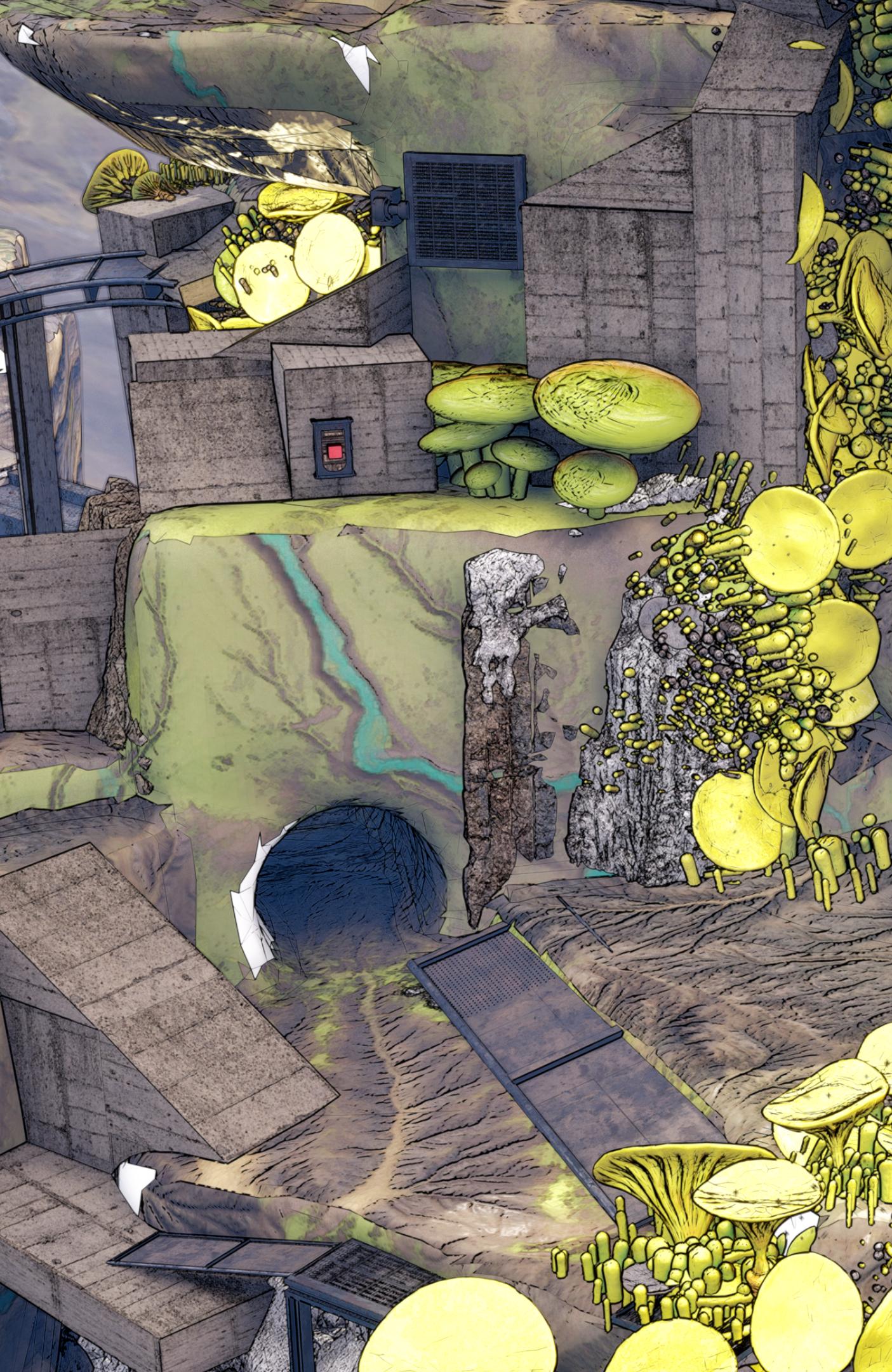
which strange characteristics such as copying another movement, or having multiple heads of different other animals.
Annihilation provides a postnature environment where a lighthouse acts as ground zero for the mutations, seemingly copying and adapting anything that is given to it. The story has a vast unknowable-ness, yet giving the reader enough to fill in the gaps themselves.
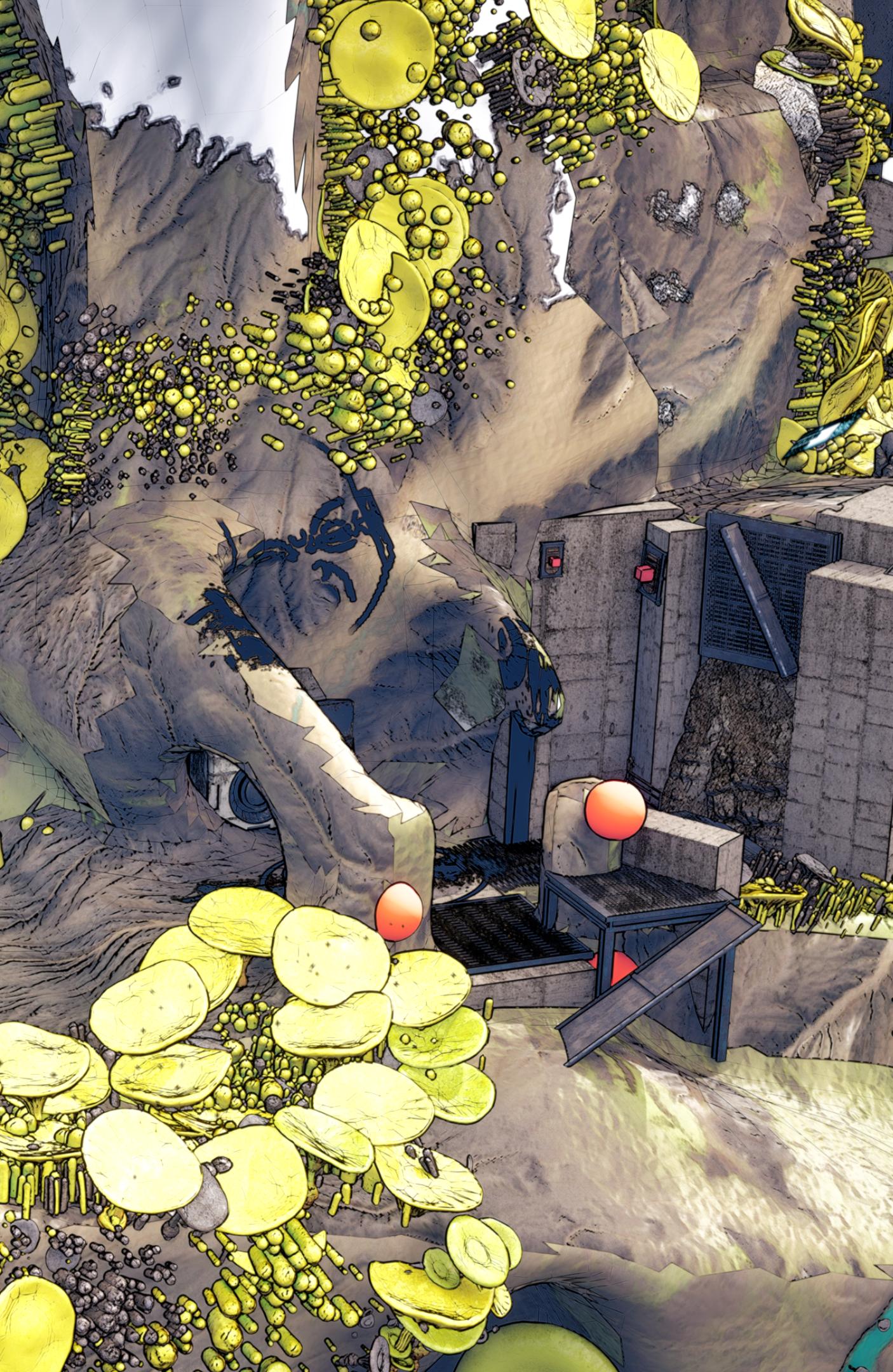
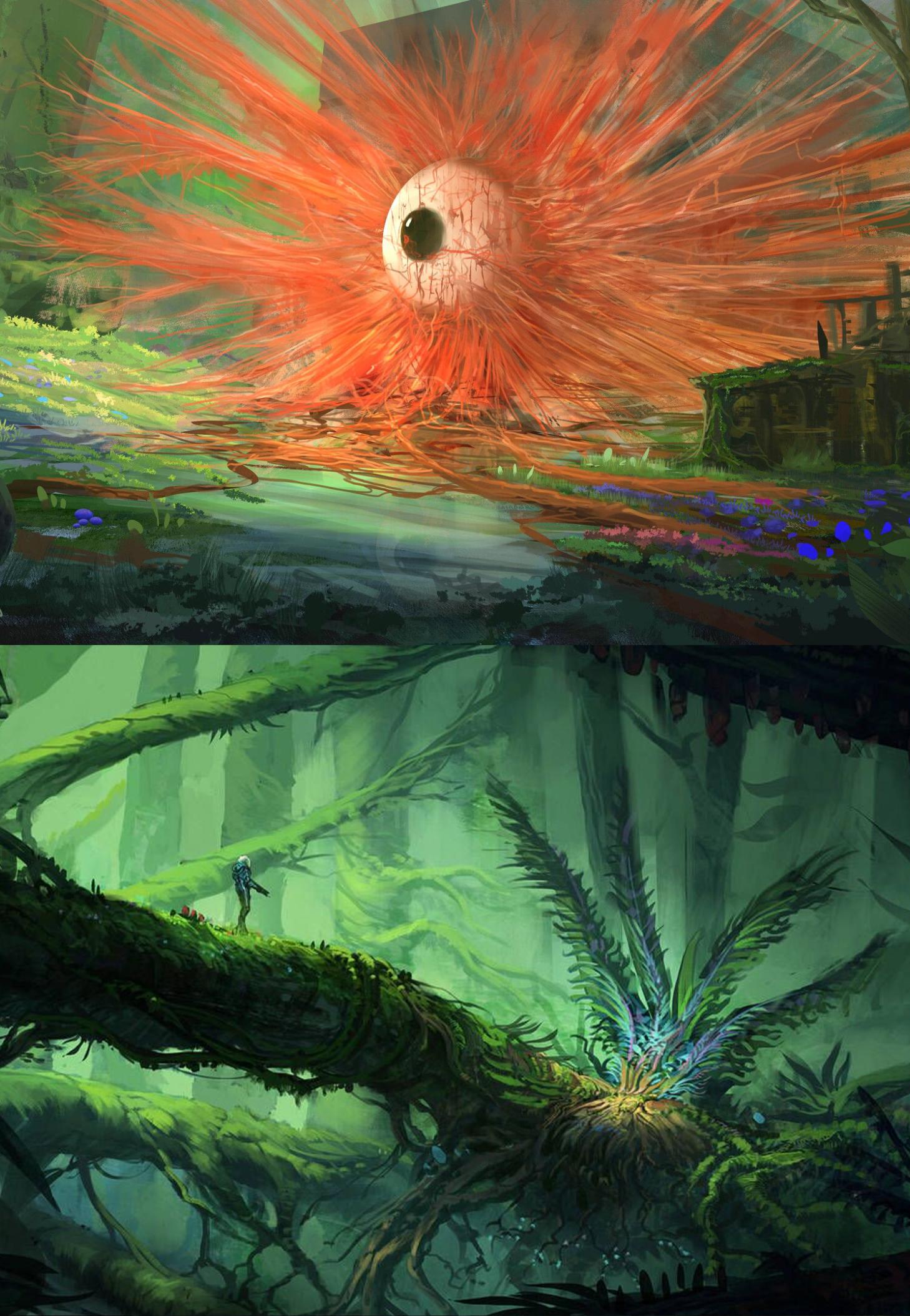

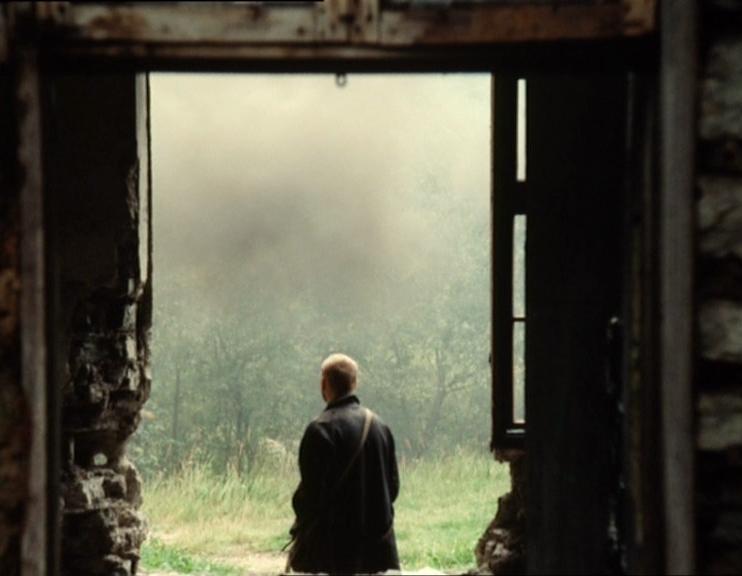

by Andrei Tarkovsky (1979)

Stalker tells the story of an expedition led by a figure known as the “Stalker”, who guides his two clients, a melancholic writer seeking inspiration, and a professor seeking scientific discovery, through a hazardous wasteland to a mysterious restricted site known simply as the “Zone”, where there supposedly exists a room which grants a person’s innermost desires.
This film showcases a great visual element, displaying the unnerving quality of the landscape of the Zone as the characters move through the spaces.
The idea of one notable figure being a guide for others, and knowing the landscape to such a high degree, shows that this place has been around long enough for someone to become familiar with it. As if the Zone has been existing for hundreds of years, and there is an entire collective based on guiding others to their innermost goal.
Similar to Annihilation, the story uses the characters occupations as their naming methods, keeping with the weird-ness of the landscape and story. The religious aspect of the final destination that the other charactecters have gives more depth.


You+Pea’s work explores the integration of videogame technologies into architectural design, leading conversations on how games can engage new participants in the design of cities. They teach and lecture on the subject worldwide. They operate between the design of architectural interventions and virtual worlds, alongside developing critical theory that underpins their connection. They create and analyse virtual, interactive game spaces to provoke conversations about the physical world.
Through Videogame Atlas, they explore and traditionally document many different videogame worlds and levels,
each with their own unique set of systems and interactions. The variability in these game systems provide an interesting set of drawings and models, setting forth the typologies of that specific game world.
In their Bartlett studio Videogame Urbanism, they explore games as a medium for architectural explorations and learnings, having their students create games for the final.
While these techniques are using the same mediums as level designers, You+Pea are using them to provide a tool to architects and traditonally document the game worlds instead of narratively exploring those spaces.

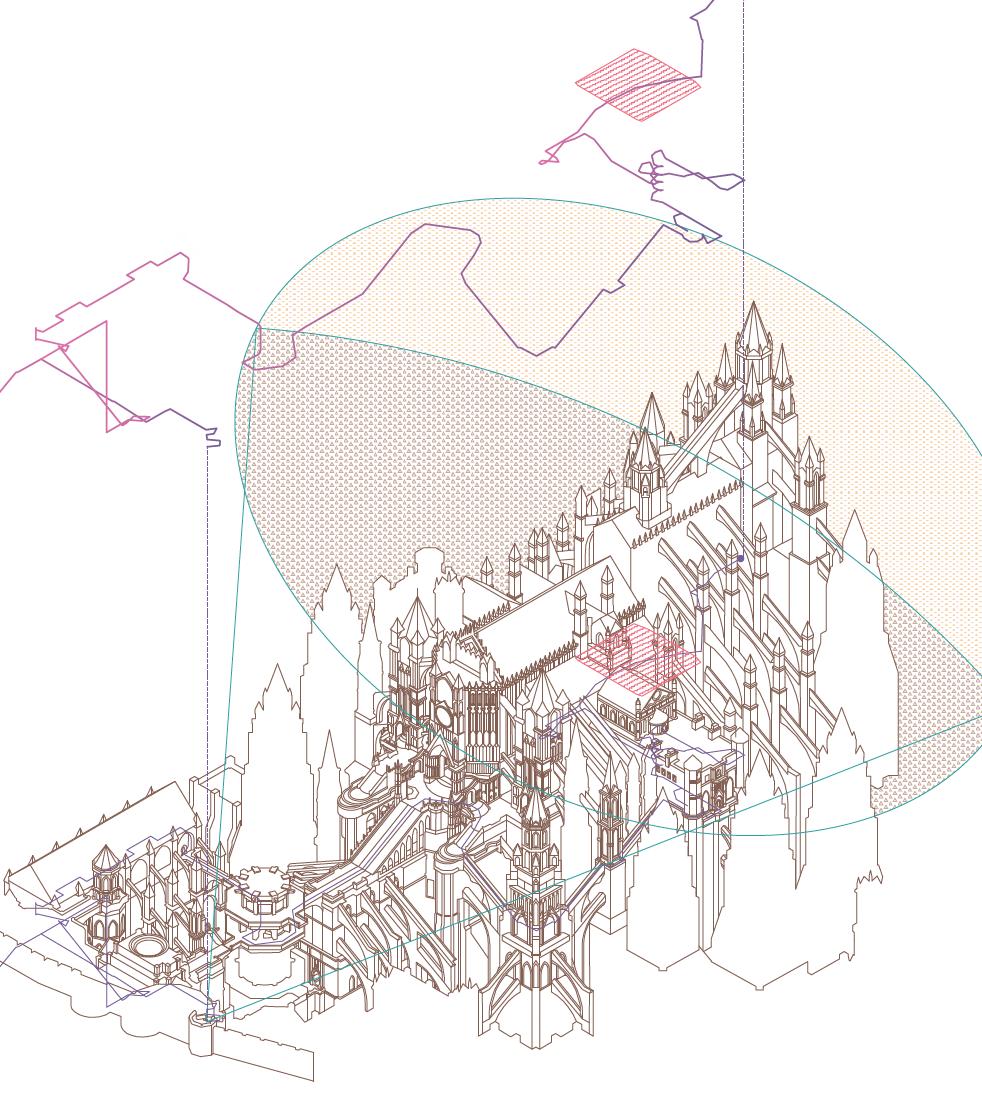




Damjan Jovanovic for being my advisor for the project, and helping me through the many, many issues with Unreal blueprints and other technical problems.
Jennifer Chen for helping me build this world and bring it to life.
Alice Bucknell for bringing a fresh perspective into game ecologies.
Erik Ghenoiu + John Cooper for helping me stabilize this project in contemporary theory.

Liam Young for helping me understand how to frame this project for both architects and game designers.
Alan Balodi for helping me create the 3D character.
Austin Lightle for creating the fungal growth animations throughout the world.
Werakul Srihahsan for modeling the Menacing Earthworks present in the 1993 Sandia report.
